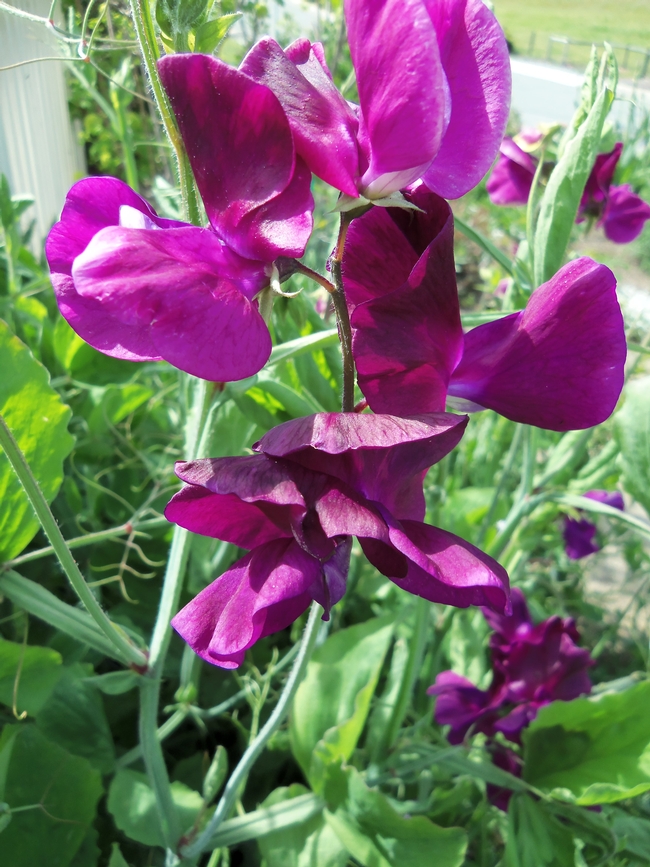Sweet Pea-Flower of the Month
Look in your garden book for sweet peas under the genus name Lathyrus. Most often these colorful flowers have a wonderful fragrance and the species name is odoratus.
The Lathyrus odoratus is an annual and a Mediterranean native that grows easily as a strong vine in Solano County gardens. The flower of the sweet pea is typical of the pea family (Fabaceae). Each flower has one large upright, roundish petal, two narrow side petals and two lower petals that form a boat-shaped structure.
I had never really planted many sweet peas in my garden until two years ago when I tried an all purple Lathyrus from Renee’s garden called 'Zinfandel'. The seed packet recommended that in mild winter areas, where the ground doesn’t freeze, seeds can be planted in the fall to form strong root systems over winter, and bloom vigorously in the spring. I planted in early November before the rains and the results were fantastic and flowers profuse.
Another Solano Master Gardener, who loves sweet peas, gave me two packets of different size sweet peas. This year I am trying a knee high pea for borders and a window box seed for planters. These sizes are perfect for those who would like the flowers but don’t have a fence or room for vines that can grow up to 9 feet.
For those of you who like to take field trips, June 10, is the Open House for Enchanting Sweet Peas in Sebastopol, CA. The owner, Glenys Johnson, grows and sells English sweet peas because of the large blooms and long stems. She shares seven grower secrets.
- When to Plant-In more moderate climates–sweet peas will give you glorious results if planted October – April. In areas with cold winters and hot summers – Pre-starting plants (see tip #4) is beneficial, allowing sweet peas the longer growing time needed.
- Where to Plant-Plant in a sunny spot. These climbing annuals will need vertical support. For best results, plant in well-cultivated soil, rich with composted manure.
- Good Germination-Use clean, fresh seed. Soak seeds overnight. To hasten germination, any seed not swollen after soaking may be chipped (use a razor blade to chip or break through skin on seed).
- Hardy Plant Starts-Start seedlings in an unheated greenhouse, cold frame or outside in a protected area. Don’t coddle this hardy frost-tolerant annual. (I planted directly in the ground)
- Keep Plants Free of Pests and Stimulate Plant Growth-Foliar feeding of plants with a weak manure tea will make foliage distasteful to aphids as well as stimulate plant growth and keep them a healthier green color. Guard against aphids, as they may transmit disease to plants.
- Prolong Blooming-Flowers will bloom for a couple of months with frequent pickings. The more bouquets you cut, the more the plants will blossom. Remove seedpods.
- Grow Unusually Long-stemmed Flowers throughout the Growing Season
After sweet peas have been blooming for awhile, flower stem length will naturally shorten. To regain longer stem length, add a small amount of blood meal to the soil by sprinkling it alongside the plant, cultivate in and water thoroughly.
- Grow Unusually Long-stemmed Flowers throughout the Growing Season
Enjoy the spring and summer sweet peas and join the Master Gardeners for the September plant give away. You might find some Lathyrus odoratus, sweet pea seeds.

'Zinfandel' sweet pea. (photo by Karen Norton)


Posted by Sharon Rico on April 19, 2012 at 9:00 AM